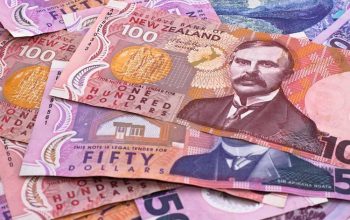Via UBS come some interesting points with the S&P 500 only around 1{721fc769be108e463fe4e33f629fb22fe291c423a7a69eaaf65dcb28e9b05dea} from a record high.
The note looks at the S&P 500 total returns (i.e. price gain plus dividends) from 1945, and points out the drawdown {721fc769be108e463fe4e33f629fb22fe291c423a7a69eaaf65dcb28e9b05dea} risks from buying at random starting points:
- in 28{721fc769be108e463fe4e33f629fb22fe291c423a7a69eaaf65dcb28e9b05dea} of cases an investor buying at a random time would at no future point have seen their investment (including dividends) trade in the red
- in just over 50{721fc769be108e463fe4e33f629fb22fe291c423a7a69eaaf65dcb28e9b05dea} of cases an investor would at no point have seen their investment fall more than 5{721fc769be108e463fe4e33f629fb22fe291c423a7a69eaaf65dcb28e9b05dea}
- in 19{721fc769be108e463fe4e33f629fb22fe291c423a7a69eaaf65dcb28e9b05dea} of cases they would have seen what UBS call a ‘personal bear market’ of a greater-than-20{721fc769be108e463fe4e33f629fb22fe291c423a7a69eaaf65dcb28e9b05dea} loss
UBS then cover the percentages when an investor buys at a record high:
- in 32{721fc769be108e463fe4e33f629fb22fe291c423a7a69eaaf65dcb28e9b05dea} of cases an investor would at no point have seen their investment (including dividends) trade at a loss
- in 15{721fc769be108e463fe4e33f629fb22fe291c423a7a69eaaf65dcb28e9b05dea} of cases would an investor have seen their investment experience a greater-than-20{721fc769be108e463fe4e33f629fb22fe291c423a7a69eaaf65dcb28e9b05dea} fall
That 15{721fc769be108e463fe4e33f629fb22fe291c423a7a69eaaf65dcb28e9b05dea} compares favourably with 19{721fc769be108e463fe4e33f629fb22fe291c423a7a69eaaf65dcb28e9b05dea} when buying was done at random. Of course, this is since 1945, so you may quibble with sample size. Also, this is the S&P 500, other indexes will differ.
UBS add:
- It might be counterintuitive that all-time highs are often followed by further gains
- but record highs aren’t the same as market peaks
- For every 2000 or 2007, when buying in at all-time highs would have subsequently felt like a bad idea, there have been many more times, like 1982, 1992, 1995, 2013, 2016, mid-2020, and early 2024, when investors were rewarded for keeping faith.



